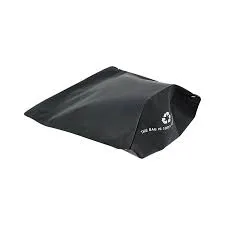- Afrikaans
- Albanian
- Amharic
- Arabic
- Armenian
- Azerbaijani
- Basque
- Belarusian
- Bengali
- Bosnian
- Bulgarian
- Catalan
- Cebuano
- chinese_simplified
- chinese_traditional
- Corsican
- Croatian
- Czech
- Danish
- Dutch
- English
- Esperanto
- Estonian
- Finnish
- French
- Frisian
- Galician
- Georgian
- German
- Greek
- Gujarati
- haitian_creole
- hausa
- hawaiian
- Hebrew
- Hindi
- Miao
- Hungarian
- Icelandic
- igbo
- Indonesian
- irish
- Italian
- Japanese
- Javanese
- Kannada
- kazakh
- Khmer
- Rwandese
- Korean
- Kurdish
- Kyrgyz
- Lao
- Latin
- Latvian
- Lithuanian
- Luxembourgish
- Macedonian
- Malgashi
- Malay
- Malayalam
- Maltese
- Maori
- Marathi
- Mongolian
- Myanmar
- Nepali
- Norwegian
- Norwegian
- Occitan
- Pashto
- Persian
- Polish
- Portuguese
- Punjabi
- Romanian
- Russian
- Samoan
- scottish-gaelic
- Serbian
- Sesotho
- Shona
- Sindhi
- Sinhala
- Slovak
- Slovenian
- Somali
- Spanish
- Sundanese
- Swahili
- Swedish
- Tagalog
- Tajik
- Tamil
- Tatar
- Telugu
- Thai
- Turkish
- Turkmen
- Ukrainian
- Urdu
- Uighur
- Uzbek
- Vietnamese
- Welsh
- Bantu
- Yiddish
- Yoruba
- Zulu
Top Blister Packaging Companies for Innovative Solutions and Quality Products
The Rise of Blister Packaging Companies Revolutionizing Product Protection and Presentation
In today's consumer-driven market, the importance of packaging cannot be overlooked. Blister packaging, in particular, has become a critical method for manufacturers across various industries, including pharmaceuticals, electronics, and food. As a result, the number of blister packaging companies has surged, providing innovative solutions that not only enhance product protection but also improve consumer engagement.
What is Blister Packaging?
Blister packaging involves the use of pre-formed plastic cavities and a backing material, often made from cardboard or aluminum foil. This packaging method is designed to securely hold products, keeping them safe from environmental factors such as moisture, air, and physical damage. Blister packs are commonly used for pills, tablets, and small electronic components, among other items. The transparency of the plastic allows consumers to view the product without opening the package, which is a significant advantage in heavily regulated sectors like pharmaceuticals.
The Growth of the Blister Packaging Industry
The increase in demand for blister packaging can be attributed to several factors. Firstly, the pharmaceutical industry has experienced exponential growth over the last decade. With more drugs being produced and distributed, the need for secure, tamper-proof packaging has become paramount. Blister packs are not only capable of containing single doses but also offer child-resistant features, ensuring safety for households with children.
Secondly, the rise of e-commerce has shifted the packaging landscape. As more consumers turn to online shopping, brands must adapt their packaging to withstand long shipping times and varied storage conditions. Blister packaging offers the advantage of lightweight materials, which can help reduce shipping costs and the overall carbon footprint of packaged goods.
Innovations in Blister Packaging
Blister packaging companies are continually innovating to meet the demands of the market. One emerging trend is the use of sustainable materials. Many companies are now exploring biodegradable and recyclable materials to create their blister packs, responding to growing consumer preferences for environmentally friendly products. This shift not only appeals to eco-conscious consumers but also helps companies comply with stringent environmental regulations.
blister packaging companies

Another significant trend is the integration of smart technology into blister packaging. Companies are now deploying advanced digital solutions such as QR codes and NFC (Near Field Communication) chips embedded in the packaging. These technologies allow consumers to access additional product information, promotional offers, and traceability details, ultimately enhancing the shopping experience and building brand loyalty.
Key Players in the Market
Several companies have emerged as leaders in the blister packaging industry. Companies such as Amcor, 3M, and BlisterPak dominate the global market, offering a wide range of packaging solutions tailored to different sectors. These companies invest heavily in research and development, ensuring they stay ahead of industry trends and technological advancements.
Moreover, smaller, specialized blister packaging companies have carved out a niche market by focusing on bespoke packaging solutions. These companies often cater to specific client needs, providing custom sizes, materials, and designs that larger companies may not offer.
Challenges Facing the Industry
Despite its growth, the blister packaging industry faces several challenges. The escalating costs of raw materials, especially plastics, pose a threat to profit margins. Moreover, regulatory pressure regarding packaging sustainability is increasing, requiring companies to invest in cleaner, greener technologies.
Additionally, ensuring product safety remains a top priority. As counterfeiting becomes increasingly sophisticated, blister packaging companies must adopt advanced security features to safeguard against imitation products, particularly in the pharmaceutical sector where the consequences of counterfeit drugs can be dire.
Conclusion
Blister packaging companies are at the forefront of an ever-evolving market, driving changes that impact various industries. As consumer preferences shift towards sustainability and innovation, these companies must adapt to remain relevant. The combination of product protection, consumer engagement, and technological integration places blister packaging as a key player in the future of packaging solutions. With the ongoing growth of e-commerce and advancements in materials and design, the blister packaging industry is poised for a successful future, continuing to revolutionize how products are presented and protected.













